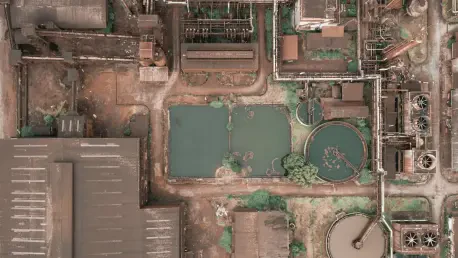In a landmark decision that reverberates through environmental regulation in Oregon, the state’s Court of Appeals has reaffirmed the authority of the Department of Environmental Quality (DEQ) to hold irrigation districts accountable for pollution control in critical water basins. This ruling, involving two Southern Oregon irrigation districts, Horsefly and Langell Valley, underscores a pivotal moment in the ongoing struggle to balance local operational constraints with stringent state environmental mandates. It addresses long-standing questions about who bears responsibility for managing pollutant levels in areas like the Upper Klamath and Lost River basins under the Clean Water Act. By overturning a lower court’s decision, the appellate court has set a precedent that could influence how state agencies enforce water quality standards across various sectors. This development not only highlights the evolving interpretation of regulatory powers but also sparks curiosity about the broader implications for environmental governance in the region.
Legal Battle Over Environmental Accountability
Initial Challenge and Circuit Court Ruling
The dispute began when the DEQ designated Horsefly and Langell Valley irrigation districts as “responsible persons” tasked with managing pollutant levels in their respective basins. This designation required the districts to develop implementation plans to adhere to the total maximum daily loads (TMDLs) set by the agency for pollutants in these areas. The irrigation districts contested this move, arguing that such responsibility exceeded their legal authority under state law and that the DEQ lacked concrete evidence linking them directly to pollution. Their challenge found initial success in the Marion County Circuit Court, where the judge deemed the DEQ’s reasoning insufficient and lacking statutory support. The lower court criticized the agency’s approach as unclear, pointing out that the rationale for holding the districts accountable appeared vague and failed to meet the necessary legal threshold for enforcement of such environmental obligations.
Appellate Court Overturns Prior Decision
In a significant reversal, the Oregon Court of Appeals disagreed with the circuit court’s findings, affirming the DEQ’s authority to label the irrigation districts as responsible for pollution control. The appellate court determined that the agency’s interpretation of existing regulations was reasonable and within its legal purview. It emphasized that the districts, by owning and operating infrastructure like irrigation systems and drainage facilities, held regulatory control over potential pollution sources within their jurisdiction. Notably, the court clarified that the DEQ was not required to provide definitive proof of specific pollution contributions from these facilities. Instead, identifying sources that “may cause” pollution was deemed sufficient for assigning responsibility. This ruling marked a shift toward a broader understanding of environmental accountability, prioritizing the role of infrastructure operators in proactive pollution management over the need for conclusive evidence of their impact.
Implications for Environmental Regulation
Shift Toward Proactive Pollution Management
This appellate decision reflects a growing trend in environmental law that favors proactive measures over reactive enforcement when it comes to water quality management. By upholding the DEQ’s discretion to designate entities based on operational control rather than direct causation of pollution, the court has endorsed a framework that encourages preventive action. This approach acknowledges the complex nature of pollution in water basins, where multiple sources often contribute to environmental degradation. The ruling suggests that entities managing critical infrastructure, such as irrigation districts, must play a central role in mitigating potential impacts, even if their precise contribution to pollutant levels remains unquantified. This perspective could reshape how state agencies across Oregon and beyond allocate responsibilities, pushing for early intervention to protect vulnerable ecosystems like the Upper Klamath and Lost River basins from further deterioration.
Balancing Local and State Responsibilities
Another critical aspect of this ruling is the delineation of responsibility between local entities and state regulators. The appellate court specified that while the irrigation districts are accountable for areas under their direct control, they are not required to enforce pollution controls on private lands or facilities outside their jurisdiction. This clarification aims to balance the burden of compliance, ensuring that local operators are not unfairly tasked with responsibilities beyond their operational scope. At the same time, it reinforces the state’s authority to set overarching environmental standards and designate key players in meeting those goals. This balance is essential for fostering collaboration between local districts and state agencies, as it recognizes the practical limitations faced by smaller entities while upholding the broader mission of environmental protection. The decision thus serves as a blueprint for navigating the often contentious relationship between localized operations and statewide regulatory mandates.
Final Reflections on Regulatory Clarity
Looking back, the Oregon Court of Appeals’ ruling provided much-needed clarity on the scope of the DEQ’s authority to enforce pollution control measures. It addressed the contentious issue of whether state agencies could hold local entities accountable without definitive evidence of pollution, ultimately siding with a more flexible interpretation of regulatory powers. Moving forward, this decision paves the way for stronger collaboration between state regulators and local districts by clearly defining the boundaries of responsibility. Stakeholders should consider leveraging this precedent to establish more robust implementation plans that prioritize preventive measures. Additionally, exploring innovative technologies and practices for monitoring and reducing pollutant levels could further support compliance efforts. As environmental challenges continue to evolve, this ruling serves as a reminder of the importance of adaptive governance in safeguarding water quality for future generations.









